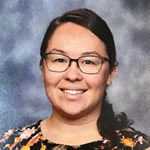This presentation will offer a succinct and substantive analysis of the status of VoiP technologies to train and regulate the practice of students and working professionals in the health, rehabilitation, and educational sectors.
STRENGTHS: Telemedicine, more broadly referred to as “telehealth” is an expanding industry that will continue to experience rapid growth. The global telemedicine market is estimated to reach USD 113.1 billion by 2025 (Grand View Research, Inc,) with a Compound Annual Growth Rate (CAGR) of 18.50%. Evidence is building that telehealth increases access to specialists, minimizes consumers’ travel time and lost wages, and reduces emergency room visits and hospitalization rates. Telehealth offers flexible full-time or part-time employment without the need to commute.
WEAKNESSES: That some consider telehealth “experimental” is slowing the progression of reimbursement parity. Telehealth training paradigms are unevenly developing across universities, professional associations, and healthcare organizations. Though telehealth was initially regarded as an altruistic, alternative service delivery model that can connect experts with patients in underserved (e.g., rural) or inaccessible locations, many professionals, and even states, regard “out of state” telepractioners as unwanted competitive incursions into their geographic regions. Therefore, it is not surprising that, with the exception of some federal employees, state professional licensure remains a barrier to delivering services to a patient outside of one’s state. Obtaining and maintaining additional state licensure can be expensive and time-consuming. Because professions are differentially developing their telehealth capabilities (e.g., infrastructure, education, and national licensure compacts) coordinated team efforts are not yet routine. Moreover, most consumers are minimally informed about the potential of telehealth, and do not yet function as advocates.
OPPORTUNITIES: Rapid growth will require both the training of future healthcare and educational professionals and the retraining of current providers. This need will be manifested at both the pre-professional and professional levels and will include telehealth managers, health information and data management personnel, and providers of rehabilitation and other healthcare services. Universities will be able to use telesupervision to oversee student training in non-local facilities, thus potentially expanding the available clinical training slots and the size of student cohorts. Interprofessional healthcare and school-based teams (including family members) will be able to serve their clients in a more coordinated, expedient, and informed manner.
THREATS: Telehealth is emerging as a global market force wherein economic growth and rapidly evolving technologies have surpassed the development of policies and regulations. While global practice presents numerous opportunities, international practice is especially unregulated. Threats include the need to ensure privacy and security in an electronic environment, and to avoid destabilizing the current in-person workforce and training paradigms.

 Tiana Guerrero is a part-time teacher at Lihikai Elementary School and a second-year graduate student in the Learning Design and Technology (LTEC) program at the University of Hawaii at Manoa (UHM). Upon receiving a B.Ed. in Elementary Education from UHM in 2018, she began teaching at her alma mater, Lihikai Elementary, as a growth block teacher for students who need additional support in a variety of subject areas. She has been privileged to be working in her dream position as a teacher in the community that helped to grow her love for teaching and learning. To further support her community and the teachers at Lihikai, she created a website that provides the teachers with resources that will assist them in differentiating their instruction to meet the needs of all their learners.
Tiana Guerrero is a part-time teacher at Lihikai Elementary School and a second-year graduate student in the Learning Design and Technology (LTEC) program at the University of Hawaii at Manoa (UHM). Upon receiving a B.Ed. in Elementary Education from UHM in 2018, she began teaching at her alma mater, Lihikai Elementary, as a growth block teacher for students who need additional support in a variety of subject areas. She has been privileged to be working in her dream position as a teacher in the community that helped to grow her love for teaching and learning. To further support her community and the teachers at Lihikai, she created a website that provides the teachers with resources that will assist them in differentiating their instruction to meet the needs of all their learners. Brian Bays is a master’s student in the Learning Design and Technology Program at the University of Hawaii at Manoa. After earning a master’s degree in library science from Indiana University in 1999, he has worked for the past twenty years for academic and public libraries. He currently serves as Head of Collection Development at the Edwin H. Mookini Library, a joint-use facility serving the University of Hawaii at Hilo and Hawaii Community College. His interests have taken him from library acquisitions to library instruction where he works with undergraduate students to develop information literacy skills.
Brian Bays is a master’s student in the Learning Design and Technology Program at the University of Hawaii at Manoa. After earning a master’s degree in library science from Indiana University in 1999, he has worked for the past twenty years for academic and public libraries. He currently serves as Head of Collection Development at the Edwin H. Mookini Library, a joint-use facility serving the University of Hawaii at Hilo and Hawaii Community College. His interests have taken him from library acquisitions to library instruction where he works with undergraduate students to develop information literacy skills. I am Zhongrui Yao who just successfully defended her dissertation on March 30, 2020. My research interest lies in social media, MOOCs, online learning, online community, and Open Educational Resources (OERs). I am passionate about teaching online. I have taught the same online course in two semester and had rewarding experience.
I am Zhongrui Yao who just successfully defended her dissertation on March 30, 2020. My research interest lies in social media, MOOCs, online learning, online community, and Open Educational Resources (OERs). I am passionate about teaching online. I have taught the same online course in two semester and had rewarding experience. Ellen Cohn is professor in the University of Pittsburgh Department of Communication Science and Disorders and professor (adjunct) at the University of Maryland Global Campus. An ASHA Fellow, she teaches courses in cleft palate/craniofacial disorders, professional issues, culture, diversity and healthcare, and rhetoric and communication. Cohn has co-authored books on: telerehabilitation, communication science and disorders (a casebook), videofluoroscopy/cleft palate; diversity in higher education; and communication, and co-authored two programs at the University of Pittsburgh’s School of Law: a Certificate Program in Disability Law, and the first MSL with a Concentration in Disability Law. She is a member of numerous professional organizations, including American Speech-Language-Hearing Association, American Cleft Palate-Craniofacial Association, and American Telemedicine Association (past Board of Directors). She serves as the founding Editor of the International Journal of Telerehabilitation. Cohn is a past investigator for a Department of Education – National Institute on Disability and Rehabilitation Research, Rehabilitation Engineering Research Center on Telerehabilitation.
Ellen Cohn is professor in the University of Pittsburgh Department of Communication Science and Disorders and professor (adjunct) at the University of Maryland Global Campus. An ASHA Fellow, she teaches courses in cleft palate/craniofacial disorders, professional issues, culture, diversity and healthcare, and rhetoric and communication. Cohn has co-authored books on: telerehabilitation, communication science and disorders (a casebook), videofluoroscopy/cleft palate; diversity in higher education; and communication, and co-authored two programs at the University of Pittsburgh’s School of Law: a Certificate Program in Disability Law, and the first MSL with a Concentration in Disability Law. She is a member of numerous professional organizations, including American Speech-Language-Hearing Association, American Cleft Palate-Craniofacial Association, and American Telemedicine Association (past Board of Directors). She serves as the founding Editor of the International Journal of Telerehabilitation. Cohn is a past investigator for a Department of Education – National Institute on Disability and Rehabilitation Research, Rehabilitation Engineering Research Center on Telerehabilitation. Ömer Arslan is a second-year doctoral student in one of the leading graduate programs; Instructional Systems and Learning Technologies at Florida State University. His interest in online learning began when he was a master’s student in Turkey. He learned about socio-cultural dynamics manifested in learning environments. Currently, he engages in activities that contribute to his personal and professional development inclusive of enrolling in graduate courses, teaching EME2040 Introduction to Educational Technology, participating in research projects, and research group meetings. Ömer is local to Tallahassee, Florida for more than one year, and spends her spare time walking around the lakes, jumping rope, and listening to music.
Ömer Arslan is a second-year doctoral student in one of the leading graduate programs; Instructional Systems and Learning Technologies at Florida State University. His interest in online learning began when he was a master’s student in Turkey. He learned about socio-cultural dynamics manifested in learning environments. Currently, he engages in activities that contribute to his personal and professional development inclusive of enrolling in graduate courses, teaching EME2040 Introduction to Educational Technology, participating in research projects, and research group meetings. Ömer is local to Tallahassee, Florida for more than one year, and spends her spare time walking around the lakes, jumping rope, and listening to music. Ken Kiyohara grew up in Japan. After having attended a high school in Ohio, USA, he went to the University of Iowa. Upon receiving his B.A. in Communication Studies and minor in Asian Studies, he then completed an M.A. degree in Teaching Japanese as a Second Language. He worked for Japanese and American companies in the mainland US where he experienced intercultural communicational issues in multinational organizations. These professional experiences prompted him to undertake and complete fully-employed management and business administration program at Pepperdine University. In Hawaii, he worked in the UH system in the areas of international education, continuing education and training, and online and face-to-face instructions. He is currently graduating from LETC’s PhD program at the University of Hawaiʻi at Mānoa in May and hopes to continue his area of research in the integration of technology in workforce development and continuing education.
Ken Kiyohara grew up in Japan. After having attended a high school in Ohio, USA, he went to the University of Iowa. Upon receiving his B.A. in Communication Studies and minor in Asian Studies, he then completed an M.A. degree in Teaching Japanese as a Second Language. He worked for Japanese and American companies in the mainland US where he experienced intercultural communicational issues in multinational organizations. These professional experiences prompted him to undertake and complete fully-employed management and business administration program at Pepperdine University. In Hawaii, he worked in the UH system in the areas of international education, continuing education and training, and online and face-to-face instructions. He is currently graduating from LETC’s PhD program at the University of Hawaiʻi at Mānoa in May and hopes to continue his area of research in the integration of technology in workforce development and continuing education. Dawn Adolfson is a doctoral student at Florida State University studying instructional systems and learning technologies. Her research interests are in transfer student success, distance education, and transactional distance.
Dawn Adolfson is a doctoral student at Florida State University studying instructional systems and learning technologies. Her research interests are in transfer student success, distance education, and transactional distance.